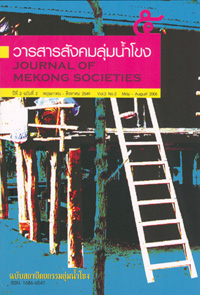Spatial Usage in Earthen Dwellings: A Case Study in Southern Isan
Main Article Content
Abstract
Tuekdin (earthen houses) in northeastern Thailand were mainly built during the reign of King Rama V by Chinese immigrants. With an architectural style and unconventional construction method, tuekdin are distinct from traditional styles. At present, tuekdin in Isan can be found only in a few old Chinese areas. This study focuses on the evolution of spatial usage of tuekdin in the past and its current state in southern Isan, which comprises four provinces: Nakhon Ratchasima, Burirum, Srisaket and Ubon Ratchatani. The main research methodology consists of a literature review and a field study which included inhabitants’ interviews. From a study of spatial usage it was found that tuekdin built for residential use differ from their present living conditions in term of spatial management. Therefore, many were demolished and reconstructed in new environments. The commercial tuekdin are well planned and adapted for new commercial use, so that they can be constructed continually.


